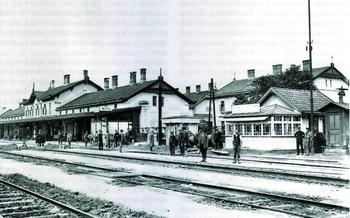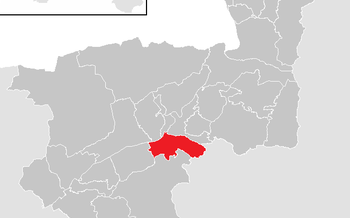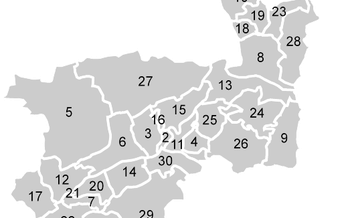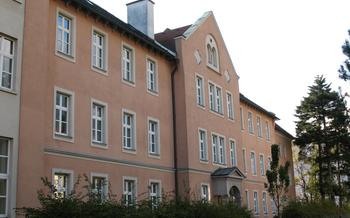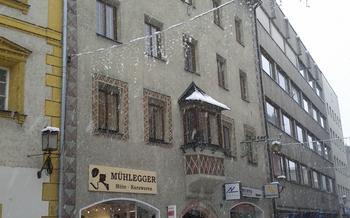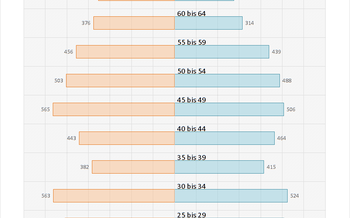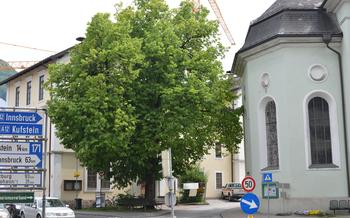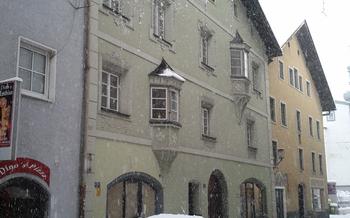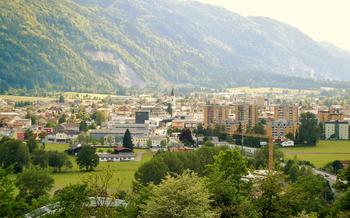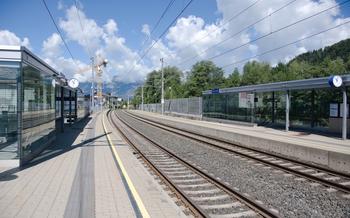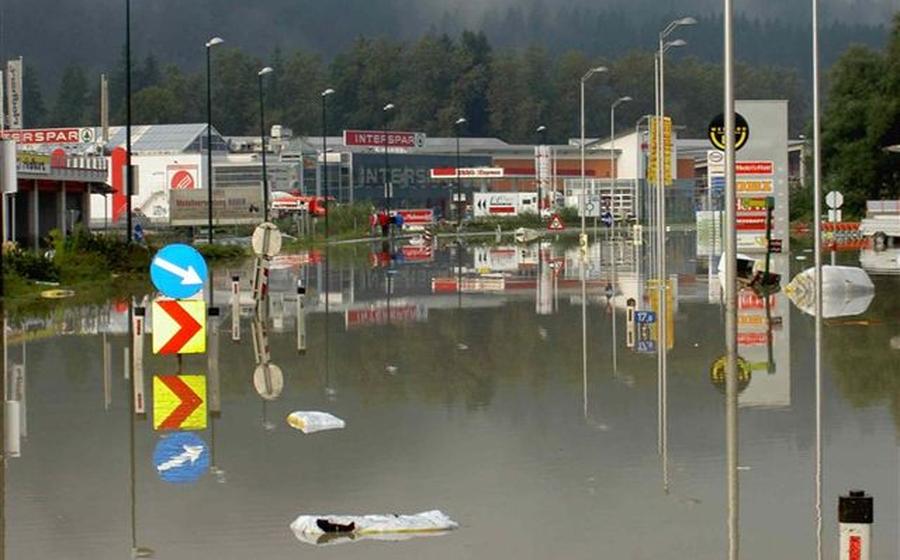
Brixlegg Copper Mine
- The History of the Brixlegg Copper Mine
- How to Get to the Brixlegg Copper Mine
- The Guided Tour
- The Mine's Exhibitions
- The Mining Village of Schwaz
- The Silver Mine Trail
- The Mining Museum
- The Schwaz Silver Mine
- The Schwaz Mint
- The Town of Wörgl
- The Wörgl Museum
- The Wörgl Waterfalls: A Cascading Spectacle in the Tyrolean Alps
- The Hohe Salve Mountain
- The Kitzbühel Alps
The History of the Brixlegg Copper Mine
The Brixlegg Copper Mine, nestled in the picturesque town of Brixlegg in Austria's Tyrol region, boasts a rich and fascinating history that dates back to the Middle Ages. Copper mining in Brixlegg began in the 13th century, and the mine quickly gained prominence as one of the most significant copper mines in Europe. The mine's strategic location, coupled with the abundance of high-quality copper ore, contributed to its economic success and made it a vital part of the region's economy.
Throughout its history, the mine underwent several expansions and technological advancements, reflecting the evolving mining techniques of the time. In the early days, miners used simple hand tools and followed the ore veins underground. However, as mining operations progressed, the introduction of more sophisticated equipment, such as waterwheels and pumps, enabled miners to reach deeper ore deposits and improve productivity.
The Brixlegg Copper Mine played a crucial role in the economic development of the region, providing employment and prosperity to the local community. Copper from the mine was used to produce various goods, including coins, utensils, and building materials, which were then traded throughout Europe. The mine's economic significance extended beyond the region, contributing to the growth of trade and industry in the Habsburg Empire.
The Brixlegg Copper Mine also holds cultural heritage value. It represents a significant chapter in the history of mining and metallurgy in Austria. The mine's well-preserved infrastructure, including tunnels, shafts, and mining equipment, provides a glimpse into the lives of miners and the challenges they faced during those times. The Brixlegg Copper Mine stands as a testament to the ingenuity, perseverance, and craftsmanship of the miners who worked there, leaving a lasting legacy on the region's cultural and industrial heritage.
How to Get to the Brixlegg Copper Mine
Public Transportation Options
The Brixlegg Copper Mine is conveniently accessible by public transportation. Visitors can take the train to the Brixlegg station, which is located just a few minutes' walk from the mine. Trains run regularly from Innsbruck, Salzburg, and other major cities in Austria.
Driving Directions
For those traveling by car, the mine is easily accessible from the A12 Inntal Autobahn. Take exit 58 (Brixlegg) and follow the signs to the mine. Ample parking is available on-site.
Parking Availability
The Brixlegg Copper Mine offers ample parking for visitors, including designated spaces for buses and RVs. Parking is free of charge.
Accessibility for Disabled Visitors
The Brixlegg Copper Mine is wheelchair accessible, and visitors with disabilities are welcome to join the guided tours. Accessible restrooms are also available on-site.
The Guided Tour
The guided tour of the Brixlegg Copper Mine is an immersive and educational experience that brings the mine's history to life. Led by knowledgeable and passionate guides, the tour takes you through the various sections of the mine, providing insights into the mining techniques, equipment, and challenges faced by the miners.
What to expect:
- Detailed explanations: The guides offer detailed explanations of the mining processes, the geology of the mine, and the historical significance of the site.
- Immersive experience: The tour includes a visit to the underground mine workings, where you can see firsthand the narrow tunnels, the mining tools, and the remnants of the mining operations.
- Hands-on activities: The tour incorporates hands-on activities, such as panning for copper ore, which provide a fun and interactive way to learn about the mining process.
Duration of the tour:
The guided tour typically lasts for about 5 hours, allowing ample time to explore the mine and learn about its history.
Languages offered:
The tours are conducted in German and English, ensuring that visitors from different language backgrounds can enjoy the experience.
Cost of the tour:
The cost of the guided tour is affordable, making it accessible to visitors of all budgets.
The Mine's Exhibitions
The Brixlegg Copper Mine exhibits provide an intriguing glimpse into the history and workings of this fascinating site. The displays feature a combination of interactive exhibits, historical artifacts, mining equipment, and geological specimens, offering visitors a comprehensive understanding of the mine's operations and significance.
The interactive displays allow visitors to engage with the mining process in a hands-on manner. They can learn about the different techniques used to extract copper and view demonstrations of the machinery employed in various stages of mining. These interactive elements make the exhibition particularly appealing to children and families.
Historical artifacts provide a tangible connection to the past. The displays showcase tools, clothing, and other items used by miners throughout the centuries, offering a glimpse into their daily lives and working conditions. Visitors can also admire the intricate craftsmanship of mining equipment and tools, which demonstrate the ingenuity and skill of the miners.
The exhibition also features a collection of geological specimens from the mine. These specimens illustrate the diverse geological formations found in the area and provide insights into the geological processes that led to the formation of the copper deposits. Visitors can explore the different types of rocks and minerals found in the mine and learn about their significance in the context of the mining industry.
The Brixlegg Copper Mine's exhibitions offer a comprehensive and engaging experience for visitors of all ages. Through interactive displays, historical artifacts, mining equipment, and geological specimens, the mine provides a unique opportunity to delve into the rich history and cultural heritage of copper mining in the region.
The Mining Village of Schwaz
Schwaz, the vibrant mining village, nestles amidst the picturesque Tyrolean Alps, just 10 kilometers from the Brixlegg Copper Mine. A visit to Schwaz offers a captivating glimpse into the region's rich mining heritage while immersing travelers in its cultural charm.
Schwaz's history is deeply intertwined with silver mining, which dates back to the 15th century. The town's prosperity during this era is evident in its well-preserved historical landmarks, including the spätgotische Pfarrkirche St. Martin and the Fuggerhaus, a magnificent merchant's house.
Beyond its mining legacy, Schwaz boasts a vibrant cultural scene, with numerous art galleries, museums, and theaters showcasing its artistic heritage. The Stadtmuseum Schwaz recounts the town's silver mining past through captivating exhibits, while the Schwazer Silberbergwerk Museum offers an immersive experience into the world of mining.
Strolling along Schwaz's enchanting streets, visitors will find a treasure trove of shops, boutiques, and cafes, offering a delightful blend of traditional Tyrolean products and contemporary finds. The village also hosts regular markets, where locals and visitors alike gather to savor regional delicacies and handmade crafts.
For a delightful culinary experience, Schwaz offers a range of traditional Tyrolean restaurants, serving hearty dishes such as "Knödel" (dumplings) and "Schnitzel" (breaded cutlet). The local cuisine reflects the region's Alpine roots, emphasizing fresh, seasonal ingredients and hearty flavors.
Whether you're a history buff, a culture enthusiast, or simply seeking a charming escape amidst stunning scenery, Schwaz promises a memorable and enriching experience.
The Silver Mine Trail
The Silver Mine Trail, also known as the Schwazer Silberbergwerk Wanderweg, is a scenic hiking trail that takes you through the historic mining landscapes of Schwaz. The trail starts in the town center and leads you to the mining village of Brixlegg, where you can visit the Brixlegg Copper Mine. Along the way, you will see numerous historical landmarks, such as mine shafts, smelters, and ore processing plants. The trail also offers stunning views of the surrounding mountains and valleys.
The Silver Mine Trail is about 6 kilometers long and takes about 2-3 hours to complete. The trail is well-marked and easy to follow, making it suitable for hikers of all levels. It is also accessible for wheelchairs and strollers.
Along the trail, you will find several information boards that provide detailed information about the history of mining in Schwaz. You can also visit the Mining Museum in Schwaz, which offers a comprehensive overview of the region's mining heritage.
The Silver Mine Trail is a great way to learn about the history of mining in Schwaz and to enjoy the beautiful scenery of the Kitzbühel Alps.
The Mining Museum
The Mining Museum in Schwaz is a must-visit for anyone interested in the history of mining in the region. The museum is housed in a former miners' hospital and features exhibits on the history of mining in Schwaz, the different mining techniques used, and the economic importance of mining in the region.
The museum has a variety of interactive displays that allow visitors to learn about the mining process in a fun and engaging way. There are also a number of historical artifacts on display, including mining tools, equipment, and minerals.
The Mining Museum offers guided tours that provide visitors with a deeper insight into the history of mining in Schwaz. The tours are led by experienced guides who are knowledgeable about the mining process and the history of the region.
The museum also offers a variety of educational programs for school groups and other organizations. These programs are designed to teach students about the history of mining and the importance of mining to the development of the region.
The Schwaz Silver Mine
The Schwaz Silver Mine, located in the picturesque town of Schwaz, is a fascinating testament to the region's rich mining history. Once one of the most important silver mines in Europe, it played a pivotal role in shaping the economic and cultural landscape of the area.
The mine's history dates back to the 12th century when silver ore was discovered in the surrounding mountains. Over the centuries, mining operations expanded, and the Schwaz Silver Mine became a major source of wealth and prosperity for the region. At its peak, the mine employed over 1,000 workers and produced a significant portion of the world's silver.
The mining techniques used in Schwaz were innovative for their time. Miners employed a variety of methods, including fire-setting and water-powered machinery, to extract the precious ore from the depths of the earth. These techniques allowed the mine to operate efficiently and profitably for several centuries.
The economic importance of the Schwaz Silver Mine cannot be overstated. The wealth generated by the mine fueled the development of the town of Schwaz and the surrounding region. It also played a significant role in the development of banking and trade in the area.
Today, the Schwaz Silver Mine is a popular tourist attraction that offers visitors a glimpse into the region's rich mining history. Guided tours of the mine allow visitors to explore the underground tunnels, learn about the mining techniques used in the past, and see the tools and equipment that were used by the miners.
Visiting the Schwaz Silver Mine is a unique and educational experience that provides a fascinating insight into the history, culture, and economy of the region.
The Schwaz Mint
In the heart of the historic mining town of Schwaz, nestled amidst the picturesque Tyrolean Alps, lies the Schwaz Mint, a testament to the region's rich mining heritage and its enduring legacy in shaping the economic and cultural landscape of Austria. Founded in the 15th century, the Schwaz Mint played a pivotal role in minting coins for the Habsburg Empire, solidifying its position as one of the most prominent minting facilities in Europe.
Step into the Schwaz Mint and embark on a journey through the fascinating history of coinage and the art of minting. Explore interactive exhibits that showcase the intricate processes involved in transforming precious metals into currency. Discover the tools, techniques, and craftsmanship that have been passed down through generations of skilled mint workers.
Marvel at the impressive collection of coins, medals, and banknotes that adorn the mint's displays. From ancient Roman coins to modern-day commemorative issues, the Schwaz Mint's collection offers a glimpse into the evolution of currency and its significance in shaping economies and societies throughout history.
Join a guided tour led by knowledgeable experts who will share captivating stories and insights into the mint's operations, the challenges faced by mint workers, and the economic and political significance of coinage in the Habsburg Empire. Learn about the strict quality control measures that ensured the integrity and value of the coins produced at the Schwaz Mint.
The Schwaz Mint is not merely a museum; it is a living testament to the enduring legacy of mining and minting in the region. It continues to operate today, producing commemorative coins and medals that celebrate Austrian history, culture, and achievements. Visitors can witness the minting process firsthand and gain a deeper appreciation for the skill and precision required to create these intricate works of art.
The Town of Wörgl
Wörgl is a charming town located in the heart of the Kitzbühel Alps, known for its stunning natural beauty, rich cultural heritage, and vibrant atmosphere. Originally a small farming village, Wörgl's strategic location at the confluence of several rivers made it a vital trading hub in the Middle Ages. Over the centuries, the town has grown into a bustling center of commerce and tourism, while retaining its traditional Tyrolean charm.
Wörgl is a treasure trove of historical and cultural attractions. The town's historic center is a delight to explore, with its narrow cobblestone streets, pastel-colored buildings, and charming squares. Visitors can admire the 14th-century Pfarrkirche St. Laurentius, a beautiful Gothic church with stunning stained glass windows, and the 16th-century Rathaus, a magnificent Renaissance building that houses the town's administrative offices.
The Wörgl Museum offers a fascinating glimpse into the town's rich history and culture. The museum displays exhibits on local geology, archaeology, and folk art, as well as a collection of artifacts from the town's mining past. Guided tours are available, providing visitors with an in-depth understanding of Wörgl's unique heritage.
Wörgl is also a culinary paradise, with a wide range of restaurants serving traditional Tyrolean cuisine, international fare, and everything in between. From cozy cafes and traditional Gasthäuser to Michelin-starred restaurants, Wörgl has something to satisfy every palate. The town's weekly market, held every Saturday, is a great place to sample local specialties and pick up fresh produce, cheese, and other delicacies.
Wörgl is well-connected by public transportation, making it an ideal base for exploring the surrounding region. The town is served by both regional and international trains, as well as buses and taxis. Wörgl is also a popular starting point for hiking and cycling excursions in the Kitzbühel Alps, with a network of well-marked trails and paths to choose from.
The Wörgl Museum
The Wörgl Museum is a cultural institution dedicated to preserving and showcasing the rich history of the town of Wörgl and the surrounding region. Housed in a beautifully restored 19th-century building, the museum offers a diverse collection of exhibits that delve into various aspects of local heritage, art, and culture.
Visitors to the Wörgl Museum can explore a fascinating array of artifacts, documents, and interactive displays that bring the town's past to life. Learn about the region's geological formation and early human settlements, the rise and fall of the mining industry, and the development of Wörgl as a transportation hub. Discover the stories of influential local figures and their contributions to the community.
The museum also boasts an impressive art collection featuring works by renowned Tyrolean artists from the 19th and 20th centuries. Admire the vibrant landscapes, portraits, and still lifes that capture the essence of the region's natural beauty and cultural heritage.
Guided tours are available for those who wish to delve deeper into the museum's exhibits and gain insights from knowledgeable local guides. Educational programs and workshops are also organized throughout the year, providing opportunities for visitors of all ages to engage with history, art, and culture in a fun and interactive way.
Whether you are a history buff, an art enthusiast, or simply curious about the heritage of Wörgl, the Wörgl Museum is a must-visit destination that offers a captivating glimpse into the town's rich past and vibrant cultural tapestry.
The Wörgl Waterfalls: A Cascading Spectacle in the Tyrolean Alps
Nestled in the picturesque Tyrolean Alps, the Wörgl Waterfalls offer a captivating spectacle of cascading waters that tumble down a series of rocky ledges, creating a mesmerizing display of nature's raw beauty. Easily accessible from the town center, the waterfalls are a popular destination for nature enthusiasts, photographers, and visitors seeking a tranquil escape amidst the stunning alpine scenery.
A well-maintained hiking trail winds its way through the lush forest, leading visitors to the base of the waterfalls, where they can marvel at the sheer force and grandeur of the water as it plunges into the pool below. The trail also offers several vantage points, allowing visitors to capture breathtaking photographs of the cascading waters and the surrounding landscape.
For those seeking a more immersive experience, swimming and picnicking areas are available near the waterfalls, providing the perfect opportunity to cool off on a hot summer day and enjoy a leisurely picnic surrounded by the tranquil sounds of nature.
The Wörgl Waterfalls are a true hidden gem of the Tyrolean Alps, offering a unique and unforgettable experience for visitors of all ages. Whether you're an avid hiker, a nature lover, or simply seeking a moment of tranquility, the waterfalls are a must-visit destination that will leave you spellbound.
The Hohe Salve Mountain
The Hohe Salve Mountain, with its majestic 1,829-meter peak, stands as the crowning jewel of the Kitzbühel Alps, beckoning adventurers and nature enthusiasts alike. As the region's highest summit, the Hohe Salve offers an awe-inspiring panorama that stretches across the breathtaking Tyrolean landscape, painting a picture of verdant valleys, shimmering lakes, and distant mountain ranges.
The ascent to the Hohe Salve is a rewarding experience, with a variety of trails catering to different skill levels. Whether you prefer a leisurely stroll through alpine meadows or a challenging hike up steep slopes, the Hohe Salve promises an unforgettable journey. For those seeking a more thrilling experience, the mountain's via ferrata routes offer a unique blend of climbing and hiking, providing a safe and exhilarating way to conquer the summit.
Once at the top, the panoramic views from the Hohe Salve are simply breathtaking. The surrounding peaks of the Kitzbühel Alps form a majestic amphitheater, while the distant Zillertal Alps and the Wilder Kaiser mountain range add to the stunning backdrop. On clear days, the visibility extends as far as the Großglockner, Austria's highest mountain, providing a truly unforgettable vista.
In addition to its scenic beauty, the Hohe Salve is also a popular destination for skiing enthusiasts during the winter months. The mountain's slopes offer a variety of runs for skiers and snowboarders of all levels, making it an ideal destination for families and experienced skiers alike. The Hohe Salve is also home to several mountain huts, where visitors can warm up with a hearty Tyrolean meal or simply relax and soak in the stunning views.
Whether you're a seasoned hiker, an avid skier, or simply someone seeking breathtaking panoramas, the Hohe Salve Mountain promises an unforgettable experience. As you stand atop this Tyrolean giant, surrounded by the majestic beauty of the Kitzbühel Alps, you'll understand why the Hohe Salve is truly a must-visit destination in Austria.
The Kitzbühel Alps
The Kitzbühel Alps are a mountain range in the Eastern Alps, located in the Austrian state of Tyrol. The range is named after the town of Kitzbühel, which is a popular ski resort. The Kitzbühel Alps are known for their stunning scenery, which includes towering peaks, lush green valleys, and crystal-clear lakes. The range is also home to a variety of wildlife, including deer, chamois, and marmots.
There are many activities to enjoy in the Kitzbühel Alps, including hiking, biking, skiing, and snowboarding. The range is also home to a number of charming villages, where visitors can experience traditional Tyrolean culture.
Accommodation options in the Kitzbühel Alps range from cozy guesthouses to luxurious hotels. There are also a number of campsites located throughout the range.
The Kitzbühel Alps are easily accessible by car or public transportation. The nearest airport is Innsbruck Airport, which is located about an hour's drive from the range.
Overall, the Kitzbühel Alps are a beautiful and versatile mountain range that offers something for everyone. Whether you're looking for a challenging hike, a relaxing bike ride, or a world-class ski resort, you're sure to find it in the Kitzbühel Alps.
